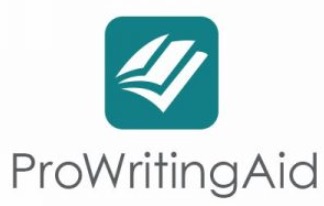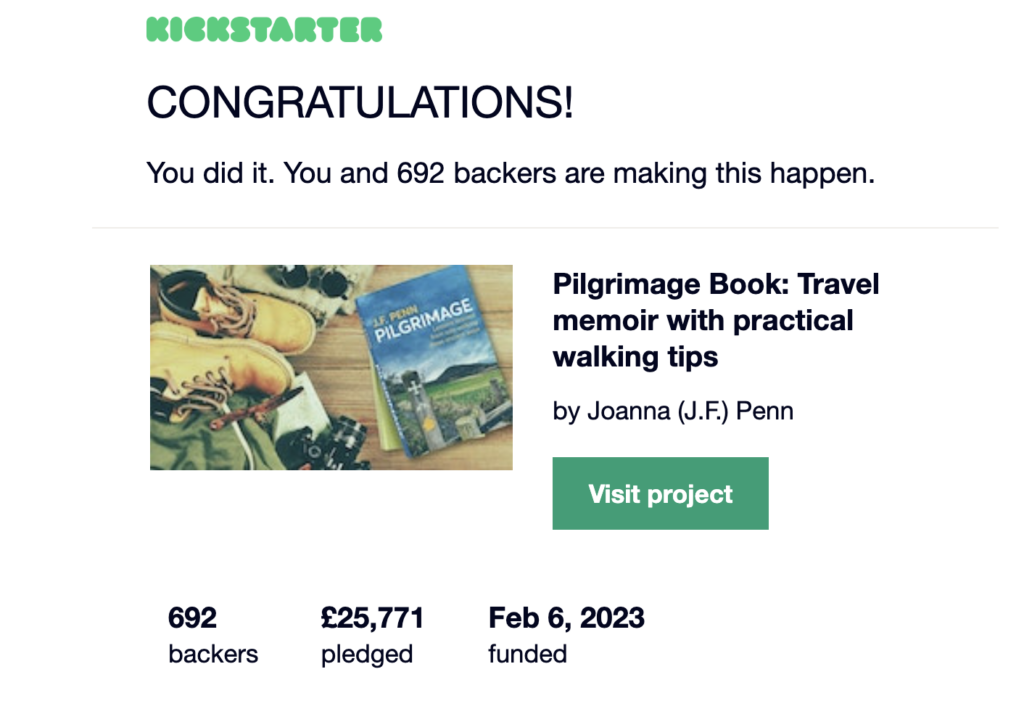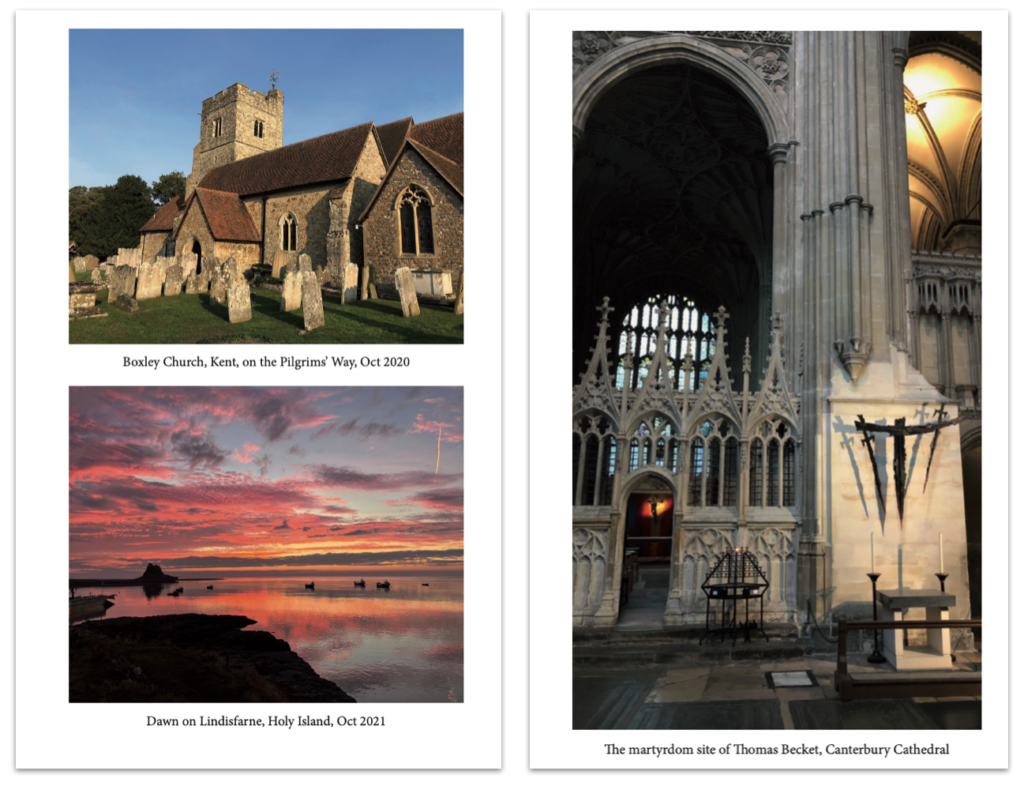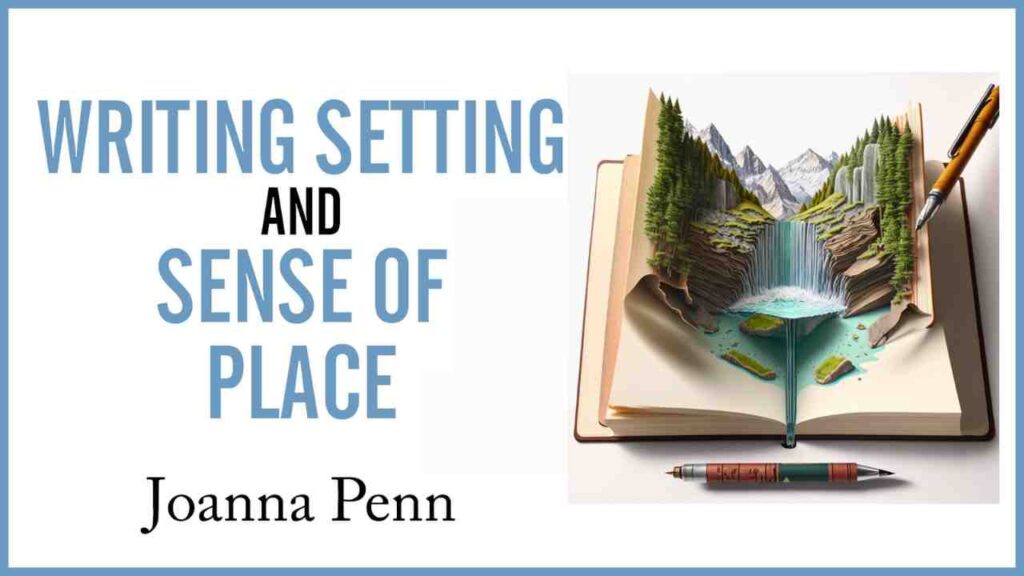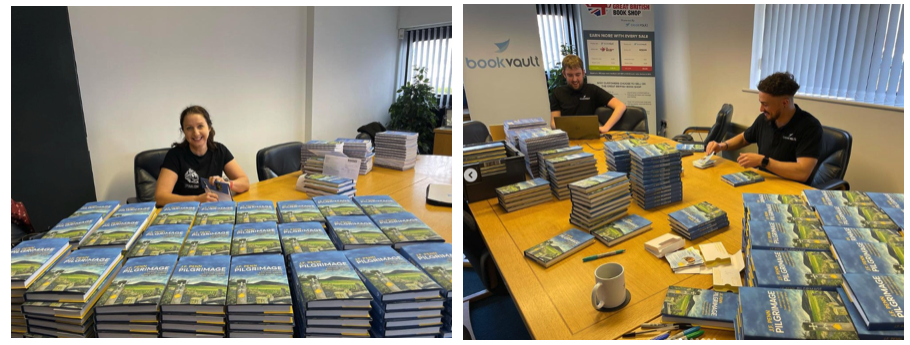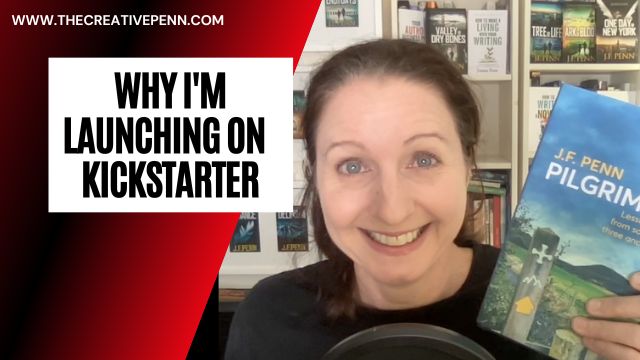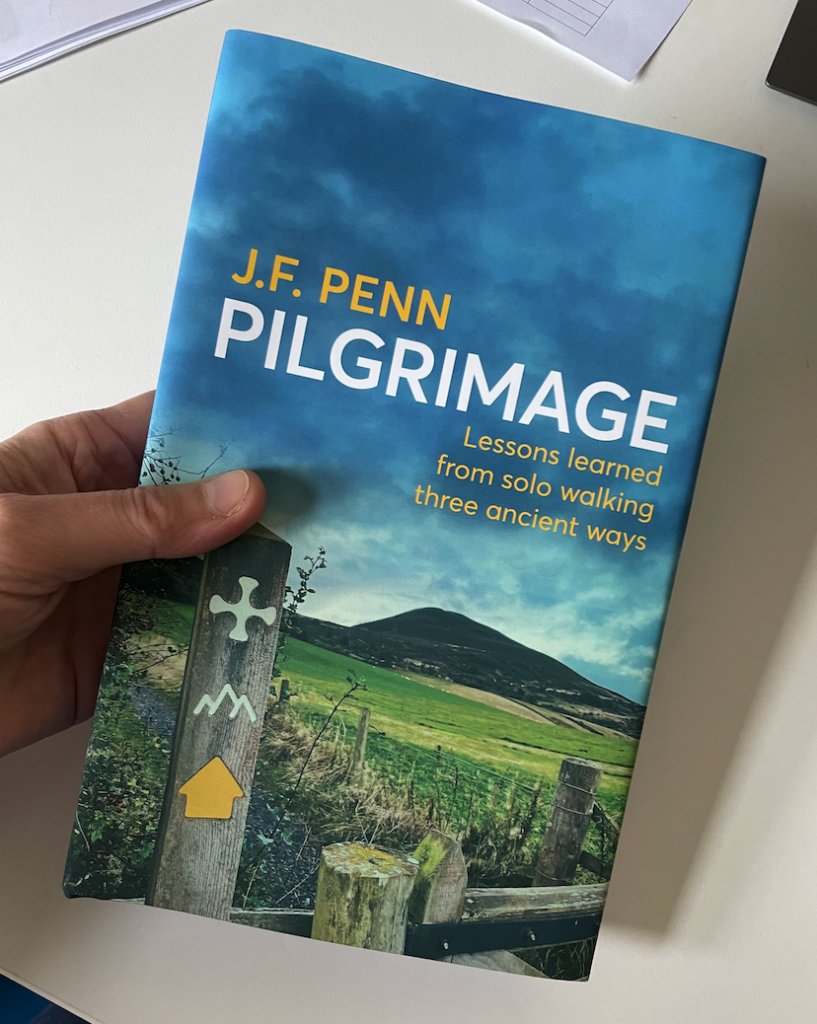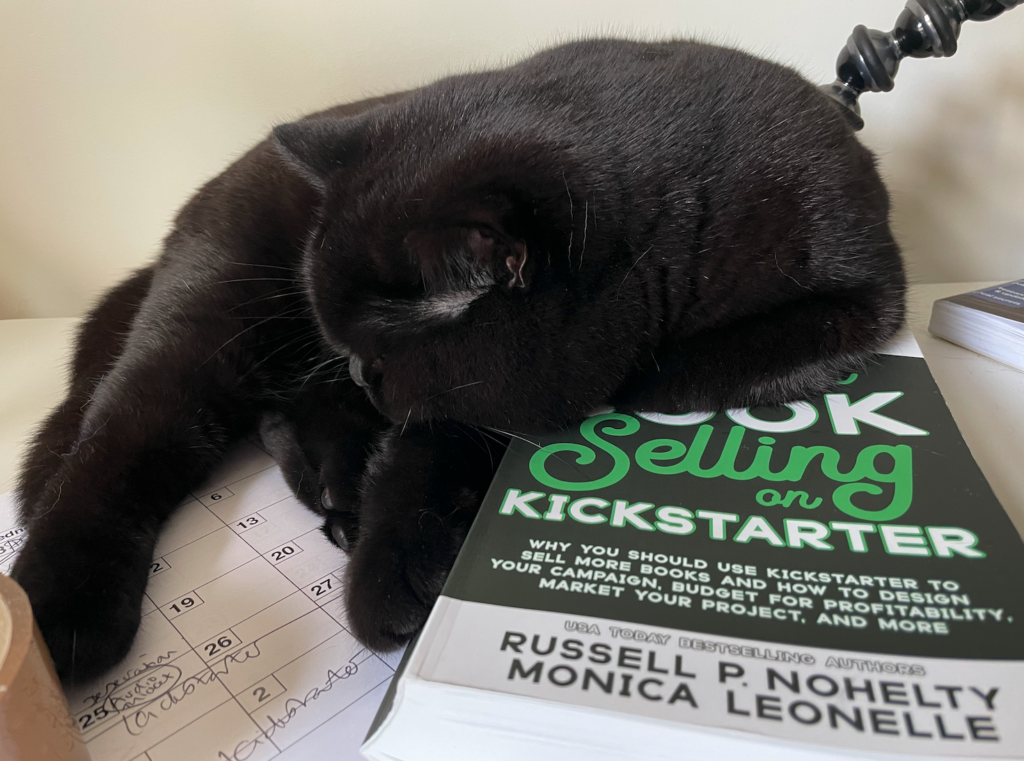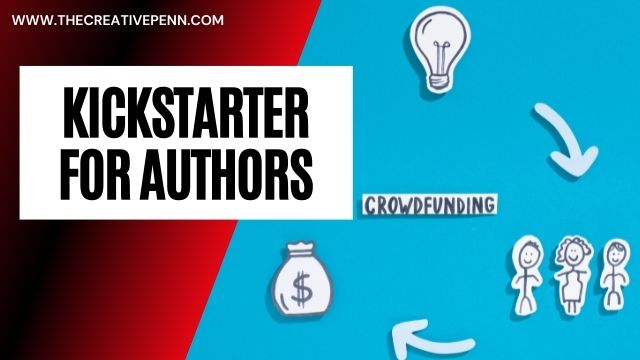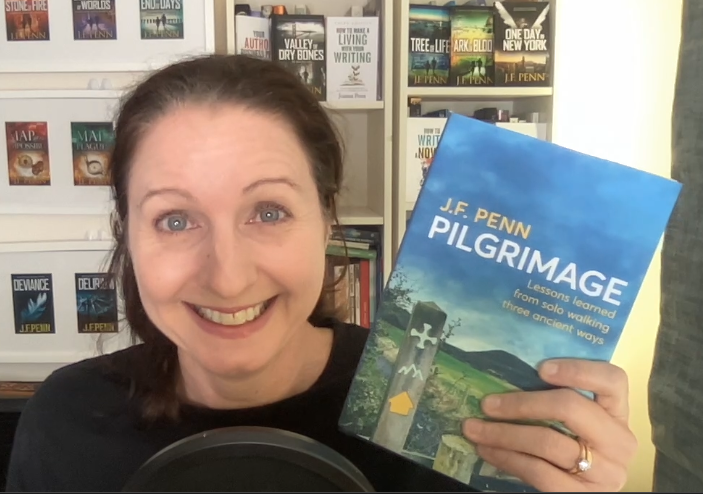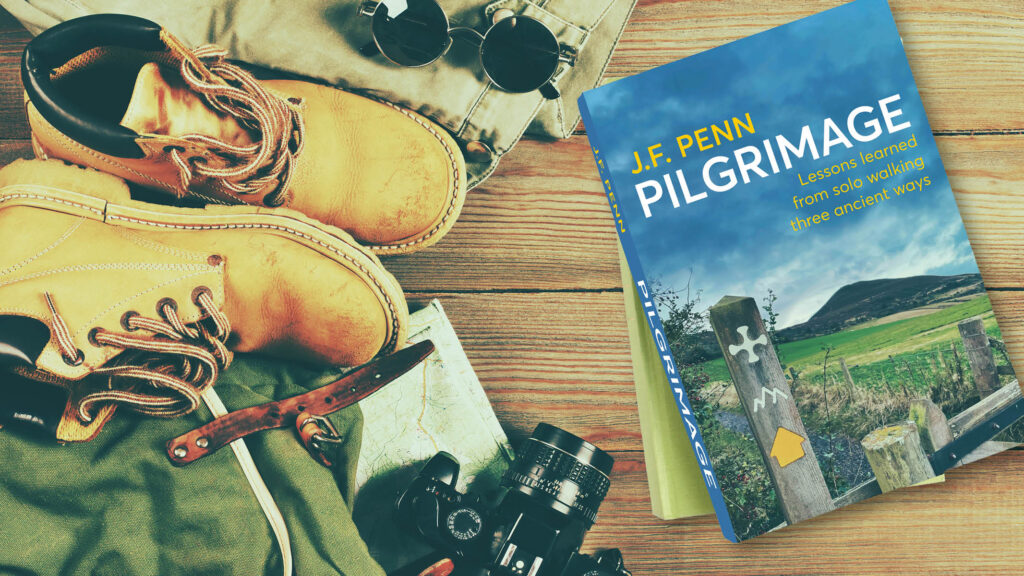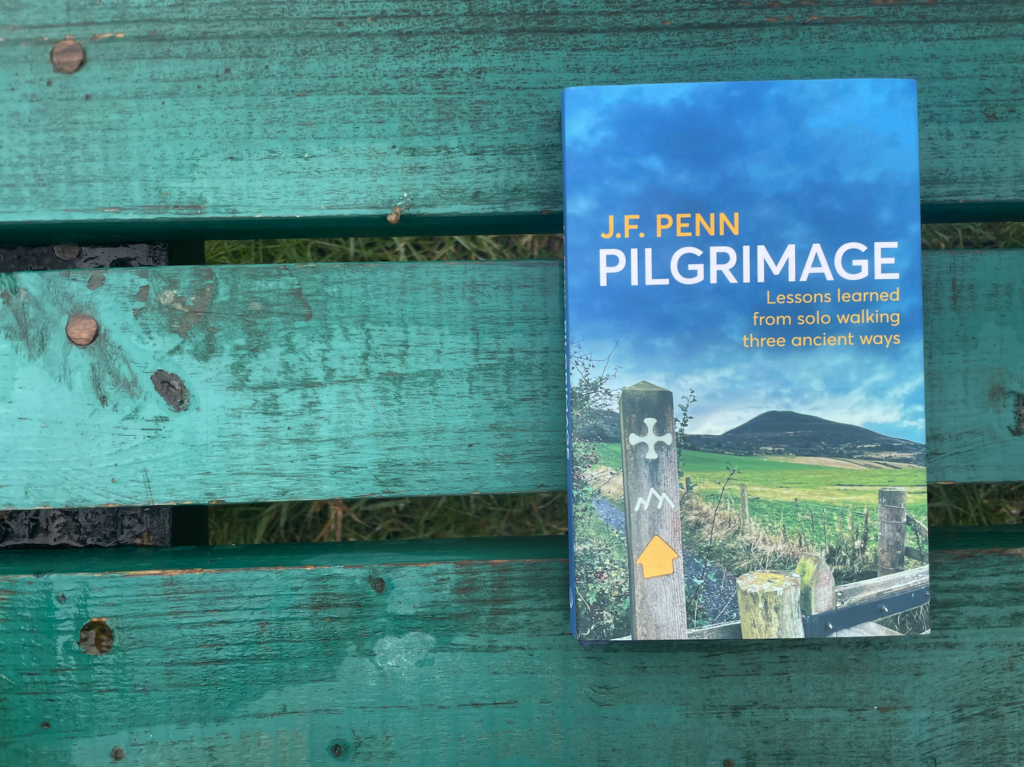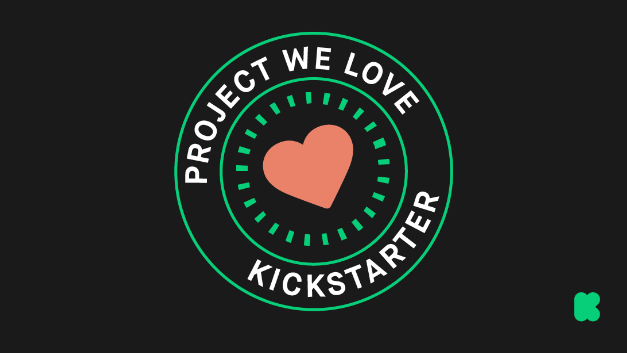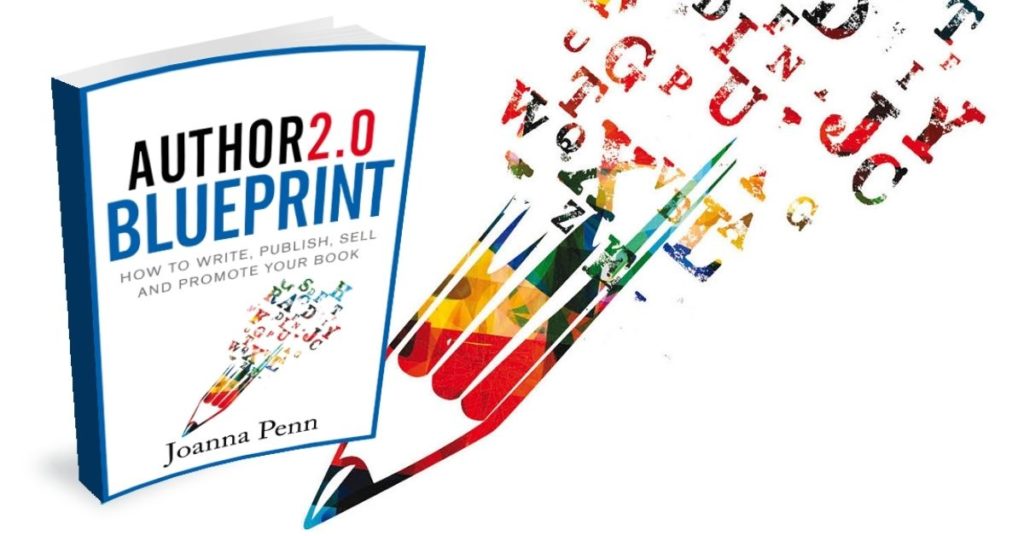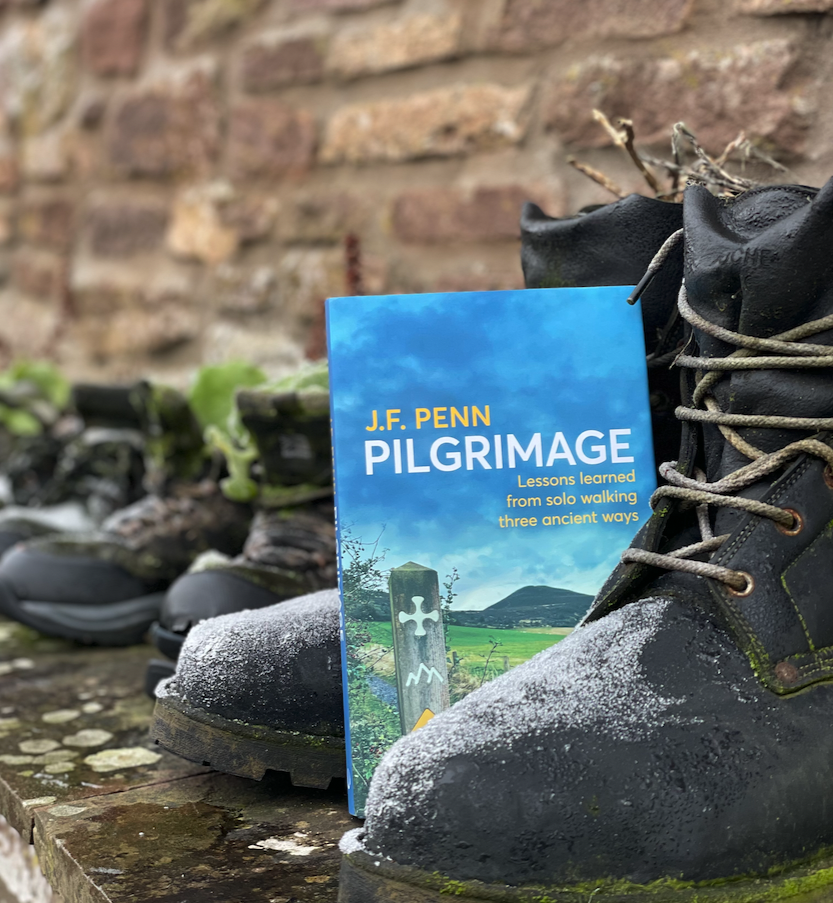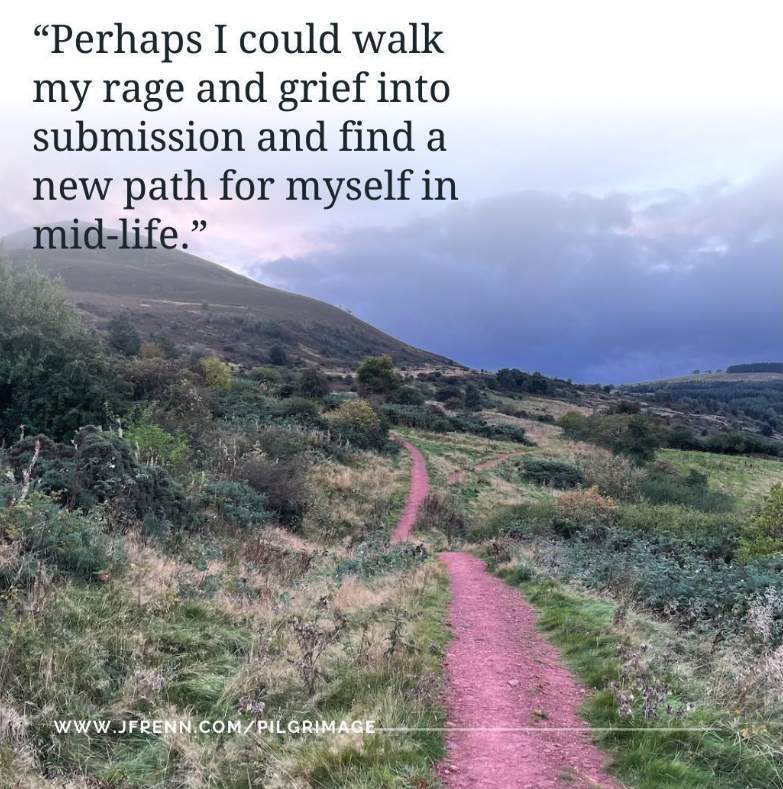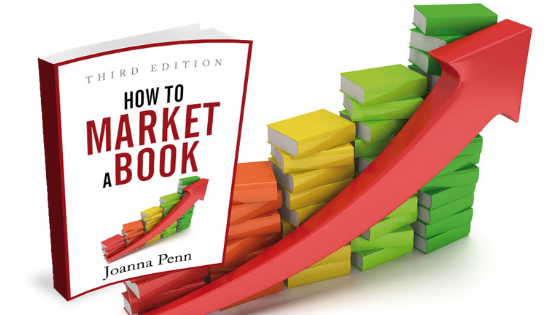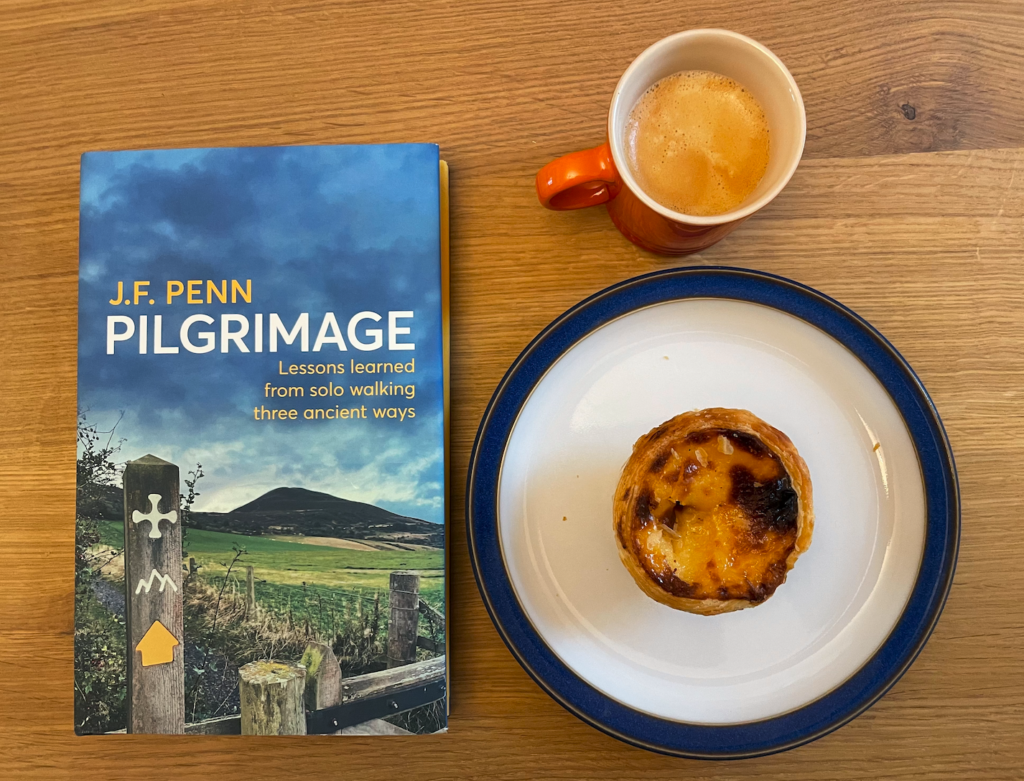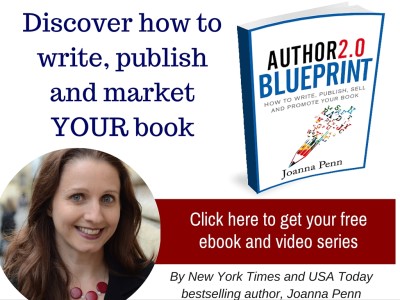Podcast: Download (Duration: 1:23:32 — 67.1MB)
Subscribe: Google Podcasts | Spotify | Stitcher | TuneIn | RSS | More
My Kickstarter campaign for my travel memoir, Pilgrimage, funded within minutes and raised over £26,000 (over US$31,000) for a niche book in a new market. In this episode, I share my lessons learned and tips for a successful campaign.
In the intro, I mention the 6 Figure Author Podcast, The Writers Well Podcast, and Reid Hoffman’s new Possible podcast.
Today’s show is sponsored by ProWritingAid, writing and editing software that goes way beyond just grammar and typo checking. With its detailed reports on how to improve your writing and integration with Scrivener, ProWritingAid will help you improve your book before you send it to an editor, agent or publisher. Check it out for free or get 25% off the premium edition at www.ProWritingAid.com/joanna

Joanna Penn writes non-fiction for authors and is an award-nominated, New York Times and USA Today bestselling thriller and dark fantasy author as J.F. Penn. She’s also an award-winning podcaster, creative entrepreneur, and international professional speaker. Her latest book is Pilgrimage: Lessons Learned from Solo Walking Three Ancient Ways.
You can listen above or on your favorite podcast app or read the notes and links below. Here are the highlights and the full transcript is below.
Show notes:
- Overview of the Pilgrimage campaign including rewards, add-ons, and the result
- Why Kickstarter for this project, and why now for me
- Tips for success: Learn about the platform beforehand. It is a new ecosystem for authors and different from those we are used to
- Prepare to face your fears
- The importance of getting your costs right in terms of production and international shipping
- Set aside more time than you need
- How did I market the campaign?
- Was it worth it? Will I do another Kickstarter campaign?
- What happens to Pilgrimage now?
If you want to stay in touch, sign up for my free Author Blueprint here, subscribe to The Creative Penn podcast on your favorite app, or follow me on social media.
An overview of the Pilgrimage Kickstarter campaign
I launched my first Kickstarter campaign on 22 January 2023, for my travel memoir, Pilgrimage: Lessons Learned from Solo Walking Three Ancient Ways.
The campaign finished after 14 days on 6 February 2023 with £25,771 (around US$31K) funded from 692 backers.
My initial target was £1000.
I was afraid of failure and not even making that much, plus this book falls between my existing audiences.
It is not a how-to book for authors like my other books as Joanna Penn, and it is not fiction — thriller, dark fantasy, or crime — as J.F. Penn. It was my first memoir, and also about solo walking pilgrimages, which is hardly a mainstream topic!
However, the campaign funded within minutes and it made over £5000 within the first 24 hours. It ended up as 2577% funded at £25,771.
THANK YOU to everyone who supported the campaign. You are amazing and I hope you love the book!
Here’s a graph of the funding and how it went up day by day.
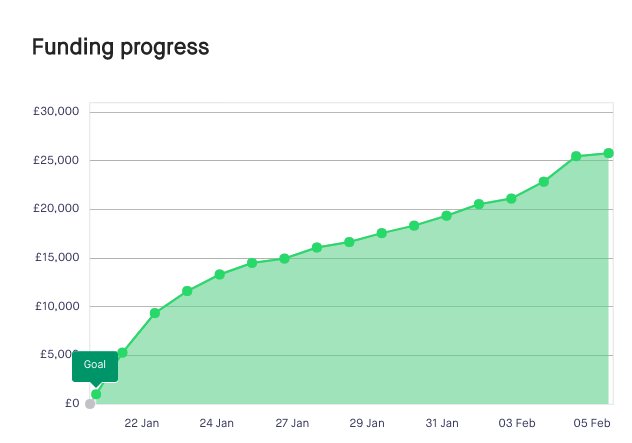
It went up more steeply at the beginning and then leveled off as expected. Kickstarter has a super useful dashboard view with reporting.
Given how much work the campaign was, I am happy with the two-week period. I don’t think I could have sustained the marketing effort any longer.
What were the different pledge levels and how popular were they?
The different pledge levels were:
No reward, just support for those who wanted to back me but didn’t want the book
Ebook — delivered by Bookfunnel, read on any device
Audiobook — narrated by me, delivered by Bookfunnel, listen on any device
Digital bundle — includes ebook, audiobook, and digital workbook

Special edition paperback — this edition with the yellow banner and color interior photos is only available in the Kickstarter and also for sale on my store, CreativePennBooks.com. The paperback version for sale on Amazon and Ingram has a plain B&W interior.
Large print paperback — this edition will be available on all the usual stores
Special edition hardback, signed or unsigned.
This edition has a fly leaf cover, silver foil, and interior color photos. Only available in the Kickstarter and also for sale on my store, CreativePennBooks.com. I will not be doing a hardback through Amazon & Ingram, as the quality is not as good as Bookvault. If you find it for sale elsewhere, then it is a secondhand copy.
Hardback bundle — included signed hardback, spiral-bound workbook, ebook, audiobook, and PDF workbook
Writing Setting Course bundle — included Writing Setting course, and everything in the hardback bundle
Consulting bundle — 90 min zoom consulting call, plus everything in Writing Setting course bundle. Limited to 10.
I also included Add-Ons so people could buy extra editions, or other high-value bundles for my non-fiction and fiction
These included any of the main editions as extra copies as well as the spiral-bound Pilgrimage Workbook, PDF digital Pilgrimage Workbook, and the Writing Setting Course.
I also included bundles for my other books: How to Write Non-Fiction bundle, How to Write a Novel bundle, Mapwalker dark fantasy Trilogy bundle, Brooke & Daniel Crime Thriller Trilogy bundle, and the ARKANE Thriller 12-book ebook bundle.
You can now get all of these on my Bundle page on CreativePennBooks.com in ebook and paperback, and I’m adding audio bundles as well.
This graph shows the pledge levels and the amount of money each level brought in.
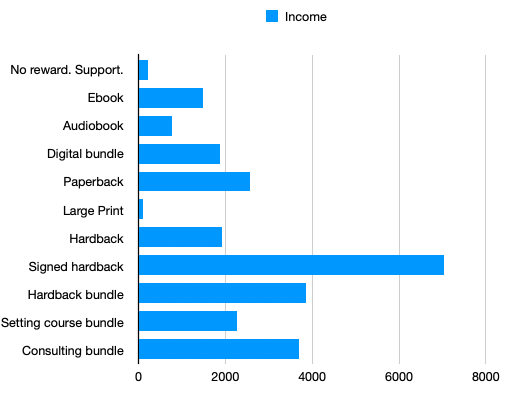
The signed hardback, as expected, was the biggest driver of revenue, but that figure also includes shipping costs.
The Large Print edition was not very popular, but I think it’s important to include for accessibility reasons.
I offered the course on Writing Setting and Sense of Place because I was teaching it in Colorado Springs at the Superstars conference, but I hadn’t prepared it in advance.
While I intend to offer courses as part of future projects, I would prepare them in advance next time, as creating this took a lot more time than anticipated after the campaign finished.
I offered 5 consulting sessions initially, but the level sold out straight away, so I raised it to 10, the maximum I want to offer. I will deliver them over the next year.
It was well worth offering all the digital bundles, including the self-help writing and the fiction bundles, as they provided extra revenue during the campaign and were of better value than buying individually on the usual stores.
I’m going to add a lot more bundles to my Shopify store, CreativePennBooks.com in the coming weeks.
How did I do fulfillment?
I used Bookfunnel to deliver all ebooks and audiobooks, as per usual with my direct sales.
I used Teachable for the Writing Setting and Sense of Place course, which is the service I have been using for years now. I created a coupon for 100% off and sent it to the backers at that level.
I used Bookvault.app for the print editions, and they also do the print-on-demand editions for my Shopify store, CreativePennBooks.com.
One of my nightmare scenarios was selling a load of hardback books and then having to spend weeks packaging them up and shipping them around the world.
As much as I wanted to do signed hardbacks, that was a real sticking point, and I even considered not doing it all, or paying someone to come and help me do it. Thankfully, Bookvault helped me out, for which I am very grateful!
They printed the hardbacks and then I drove up to the printing factory in Peterborough (about three hours drive from my house) and we had a signing morning, and then they shipped the books for me.
Yes, I could have printed the books more cheaply if I had done a limited print run in Eastern Europe or China, or even here in the UK, and dealt with the shipping myself, but I love Bookvault, their quality is amazing, and Curtis and Alex from the team helped me out.
This is obviously not a practical thing for everyone to do, but reach out to them if you’re in a similar situation.
How do you communicate with backers?
Kickstarter enables you to post Updates, which can be for backers only or available more widely.
These are essentially blog posts on your Kickstarter campaign, and they are sent to all Backers as well as remaining on the campaign page. I did Updates every few days as the campaign hit various levels and Stretch Goal rewards and then less frequently once fulfillment was complete.
Definitely update backers as much as possible and give them all the info they need to demonstrate you are delivering on your promises.
You can also email backers from the Dashboard, and email them in groups by Reward.
Why Kickstarter and not a usual book launch
I did a video on this topic as part of the marketing campaign in order to educate people about why Kickstarter is so good for them as backers, as well as better for the creator.
As a brief overview:
Benefits for backers
If you back a Kickstarter, you can get special editions, bonus content, interesting merchandise, bundles, digital specials, print specials, and early access to some really cool books from creators you already love and those you’ve never heard of.
Once you start supporting campaigns on Kickstarter, the algorithm will recommend campaigns for you. It is essentially a different way of shopping for very cool books and other products and a way that I now shop for ebooks as well as print and audio.
It’s a form of direct sales and so you have a closer connection with the creator rather than buying through an online retailer or bookstore.
Benefits for creators
You get to know people in a more personal way through the campaign, messaging with people and connecting more than you would when selling through a retailer when you don’t know who is buying your books.
As an author, you can make more money more quickly and retain a higher percentage of the royalties rather than wait months or years to get paid and have a large percentage taken out by publishers, platforms, distributors, and retailers.
Brandon Sanderson’s $41 million Kickstarter was clearly the pinnacle of what can be achieved, but many authors are happy making a few thousand for their book project upfront and use campaigns multiple times during the year.
Kickstarter takes 5% for their fee, although of course, you have to factor in the cost of production and marketing, but even then, I make more profit on my book sales through selling ebooks and audiobooks direct, and also printing with Bookvault and than I do with POD through KDP Print or Ingram Spark.
Another way you make more money is that the average order per customer is higher with Kickstarter than with sales on the usual stores. The average order on my campaign was £37.24 ($45.60), about four times higher than I might have made selling Pilgrimage in the usual way on the major retailers.
Some creators use BackerKit to add up-sells, but I decided not to use it this time. One new platform was enough to learn, but I might consider it next time.
You get paid two weeks after the campaign finishes, so the money is in your bank account much faster than if you sell on retailers.
In terms of cashflow, make sure you time your campaign so you get the money before you have to pay for printing, shipping, and any other significant bills.
There are many creators who now make Kickstarter the core of their business. It’s a spike income model, rather than a monthly income which most indie authors are used to.
The monthly income model is fantastic, but it has also had the effect of making indie authors behave as if this is like a normal job, i.e. work every month and get paid every month.
With the Kickstarter model, you can get a bigger chunk of money in one go, so you could potentially move to a big launch and then take more time off, before ramping up to the next launch months later. That kind of launch tempo is a very attractive prospect!
Why Kickstarter now?
I’ve been backing other creators on Kickstarter and other crowdfunding platforms for over a decade. The first Kickstarter campaign I backed was Seth Godin’s The Icarus Deception back in Jan 2013.
I’ve interviewed people on my podcast who have done successful campaigns over the years, but I have always resisted doing a campaign myself. There were several good reasons for this.
I knew it would be a lot of work, and I much prefer evergreen marketing to the ‘spike’ approach, which emphasizes limited-time campaigns.
Freedom is also my highest value, and I worried that I would suddenly have all these people who had paid me money and not received what they bought and I might have all kinds of terrible issues doing the fulfillment.
I also didn’t want to handle the potential issues with printing and shipping physical books.
But the publishing landscape has changed.
It is becoming harder to stand out on the big retailers because of the sheer volume of books and also with the rising cost of ads.
I don’t write to market, or rapid release, or publish into KU, which are all some of the effective ways to reach readers. I don’t have any problem with those choices, it’s just not how I like to work.
In mid-2022, I built my Shopify store, CreativePennBooks.com and I am slowly pivoting into selling direct first, which also includes Kickstarter as another direct platform.
I will continue to publish wide, so you can find my books on all stores in all formats regardless, but I will be direct-first and produce direct-only products (e.g. my Pilgrimage hardback and paperback, both with color interior pages and my spiral-bound workbooks are all direct-only.)
With the rise of generative AI, we will see an influx of content onto the main retailers, and building an individual author brand and connecting with readers directly will become ever more important.
Kickstarter is also great for special projects, and Pilgrimage is my first memoir, my first special edition hardback, and a personal book that is not aimed at either of my two main audiences.
It doesn’t fit with my Joanna Penn books — self-help for authors, and it doesn’t fit with J.F. Penn books — thrillers, dark fantasy, crime, horror, short stories and other fiction. Kickstarter seemed like the best option to launch such a different kind of book and hopefully find new readers outside of both niches.
Let’s get into some of my tips and lessons learned.
Learn about the platform from experts
I’ve been publishing and selling books through online retailers as well as my own store since 2008. I know what I’m doing — but I still had a lot to learn with Kickstarter.
It’s essentially a completely different ecosystem with different rules and a different audience, so you have to learn the ropes.
Even if you are super-successful in other places, you might crash and burn on Kickstarter unless you understand how it works and change your approach accordingly.
Start backing campaigns
See how it feels to back Kickstarter campaigns and discover what draws you in as a reader, and a fan of specific things as you might find projects you love outside of books.
You can browse the Publishing category to find new books and also use the Search to find things you might like.
In this way, you can support fellow creators and learn how the Kickstarter site works for discoverability and marketing.
Buy — and read — Get Your Book Selling on Kickstarter by Russell P. Nohelty and Monica Leonelle.
My copy is full of underlining and notes, and it was on my desk for months so Noisette, one of our British short-hair cats, curled up on it a lot.
Go through the book in detail and note down all the things that can make a campaign successful. It is a great book and this step alone will get you a long way.
Monica and Russell also have a podcast, plus downloadable Kickstarter roadmap, plus courses, and a Facebook group, as well as an accelerator where you can join other creators campaigning and help each other go further.
Just go to KickstartYourNovel.com for all the details, although it’s also relevant for non-fiction authors and creators of other projects. It’s not just for novelists.
Monica also did a great interview on The Creative Penn Podcast about Kickstarter for Authors. Bryan Cohen also shared his tips after a successful non-fiction Kickstarter campaign.
WMG Publishing with Dean Wesley Smith and Kristine Kathryn Rusch also have free and premium courses on Kickstarter.
Also, make sure you go through the Kickstarter Creator Resources to get more direction on the campaign. Do not assume you know what you are doing if this is your first campaign! Also, check the Terms of Use as once more, they are different from other platforms.
Ask specific people to review your Campaign page before it launches
You can share a preview prior to launch and get feedback on your page. This helps you refine your Story and the Rewards, answer any questions before the campaign goes live, and can also help pique the interest of your audience.
I asked specific people who had done Kickstarter campaigns for help at different stages of the process. Thanks to Holger Nils Pohl, Guy Windsor, Sara Rosett, and Dean Wesley Smith, who all checked the Preview of my campaign and gave me valuable feedback, which I was able to incorporate pre-launch.
Thanks in particular to Russell Nohelty who did a review of my page just prior to launch and gave me specific tips that I implemented.
He suggested that I change the title and sub-title so it was not repetitive and made better use of the SEO aspects of Kickstarter. He said I should move the ‘why’ toward the front of my sales video and further up the sales page, emphasizing why the book is important to me and why others might find it useful, as well as bringing more emotion into the page, instead of primarily focusing on formats.
Plus, he suggested moving the sample of the text and audio up the page so people could find that sooner, and adding a Specification section with the different books available and how many pages they were, the size, and listening time for audio.
Thanks also to my patrons on Patreon.com/thecreativepenn who helped me refine the page language so it wasn’t confusing, and through this, I was able to answer all questions before the campaign launched. Some of those who reviewed the page went on to buy.
Review common mistakes from other campaigns
If you examine how others made mistakes, you can learn from them. The most common seem to be:
- Not finishing the book before the campaign
- Getting the financials wrong — for production, shipping, and for any other rewards. I know some authors who have ended up merely breaking even or sometimes out of pocket from campaigns. Don’t do that!
- Not making the most of the Story sales page and including everything necessary so Backers understand and want to support the campaign
- Setting unrealistic goals, like expecting to make six figures on a first campaign
- Not allowing enough time for everything
- Not seeking feedback from people who have done it before
- Not marketing the campaign enough
- Over-promising and under-delivering
- Poor communication with backers about the status of rewards
Prepare to face your fears
This entire experience thrust me out of my comfort zone and into a new way of creating, launching, and connecting with readers.
Pilgrimage is my first memoir, my first special hardback with color photos, and my first Kickstarter crowdfunding campaign.
The book is very personal and I bare my soul about some dark times, so that was terrifying in itself, let alone trying a new product edition and publishing platform.
On the evening I clicked the Launch button — and yes, you have to click an actual button — my heart was hammering out of my chest.
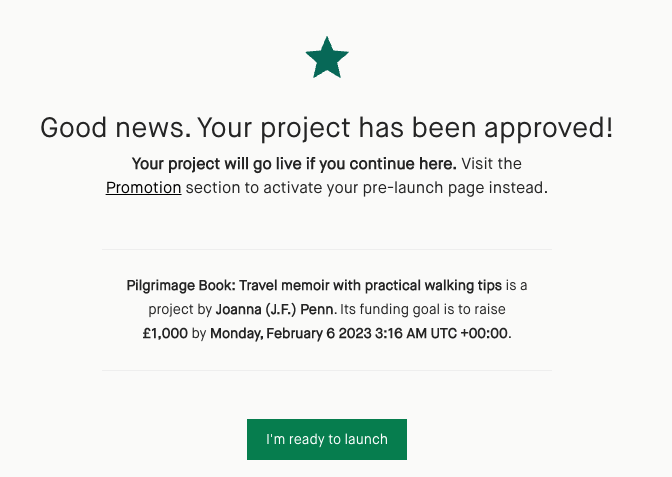
I was afraid of failure.
I was afraid of being embarrassed if my campaign didn’t fund. I wrote a book on marketing, How to Market a Book, so I would have been mortified if I had not funded. I even changed my target from £5000 to £1000 the night before, as I was so terrified it wouldn’t fund.
I was afraid of getting something terribly wrong and ending up out of pocket through issues with printing and shipping.
I was afraid of letting backers down by promising something I might not be able to deliver.
I was afraid I had over-committed myself to a whole load of work I would resent doing. I am a one-person business, and although I work with freelancers, I still do pretty much everything myself.
So yes, there was a lot of apprehension and fear. You can listen to an excerpt from the Wish I’d Known Then podcast here, where I talk about these fears.
I’ll circle back toward the end of this to recap whether my fears were realized.
Be careful with international shipping and fulfillment of signed books/products
Shipping costs can sink your campaign if you get them wrong, so be very careful with this area.
I have sold books in 175 countries and my Creative Penn podcast has a listenership in 228 countries, so I really wanted to have a completely international campaign. I wanted to ship Pilgrimage in any format to any country, so originally, I thought I would just charge a bit extra for the book and include shipping.
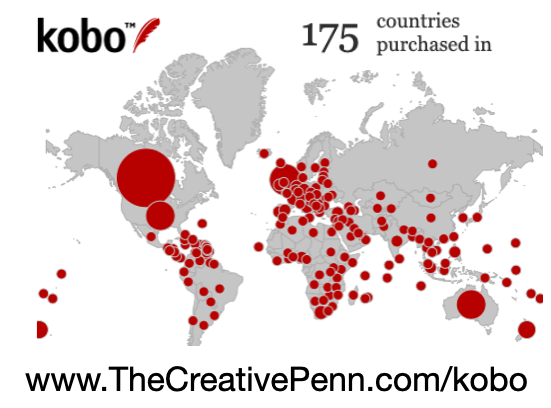
But once I set the book editions up at Bookvault, and I had the weight and dimensions sorted, I started looking at the variability of shipping costs.
It is crazy how much shipping costs vary, and I discovered I couldn’t just assume ‘it would all wash out’ and I’d end up making a profit overall. I had to be a lot more careful with the calculations.
So I focused on my biggest markets — the US, UK, European Union (which is multiple countries, but one shipping region), Canada, Australia, New Zealand, and South Africa. I added a note on the campaign to say I would add any other country for print shipping if people contacted me. As it turned out, no one asked for other countries, so this was the best way to go in the end.
You can try to prepare for everything and then something unexpected happens
A big spanner in the works for my campaign was the Russian hack, which took down the UK Royal Mail just before my launch.
This put all printed material/book shipping into flux and specifically hit the international side. Other shipping firms ramped up to take up the slack, but it made planning for the launch difficult as prices were shifting, even for posting in the UK.
Once again, I’m grateful for Bookvault’s adaptability as I could check different addresses and shipping prices even as things changed, and about 95% of my shipping ended up being within an acceptable range of what I charged.
Do your research. Weigh and measure your items so you can get exact quotes for each and check out what kind of packaging you need if you are doing your own shipping.
You have to add the shipping costs per reward and per country, so it’s a lot of manual setup to get right. But this is critical, so check and double-check.
I triple and quadruple-checked, slept on it, and checked again. Every time I checked, I found I had typed in something that didn’t quite match (as you also have to re-type on the Add-Ons), and I didn’t stop checking until the day before the launch.
Some creators in the USA only do print for the USA because of this reason, but as a Brit, I want to stand up for the international community of readers. If you’re planning a campaign, please check your primary markets and add shipping options for them. Yes, it’s a challenge, and you need to make sure you don’t end up out of pocket, but we international readers are important too!
Set aside more time than you think you need
The campaign ended up being far more significant than I expected in terms of workload and time to complete. Everyone told me that, but it was still a surprise!
I’ve been working on it almost full-time for three and a half months, and that doesn’t include the actual writing of the book.
The Pilgrimage manuscript was finished and edited by early December 2022, and I worked with my cover designer and book designer Jane at JD Smith Design to get the print files done quickly so I could get proof copies in early January.
It took time to prepare the multiple editions for the rewards
I usually produce an ebook, a paperback, and a large print edition, and I narrate my non-fiction audiobook.
But for this Kickstarter, I also wanted to do a special hardback with color photos inside, and extra details like silver foil and a flyleaf cover. I wanted to create a special print product I could be proud of.
I’m proud of all my books, but the usual paperback POD books are more about the content than the beauty of the product. For Pilgrimage, a book of my heart, I wanted a special edition.
I worked with Jane on the design, going through my photos from the various pilgrimages to find those that resonated with the content, for example, the cadaver tomb at Canterbury and my Compostela from the Camino.
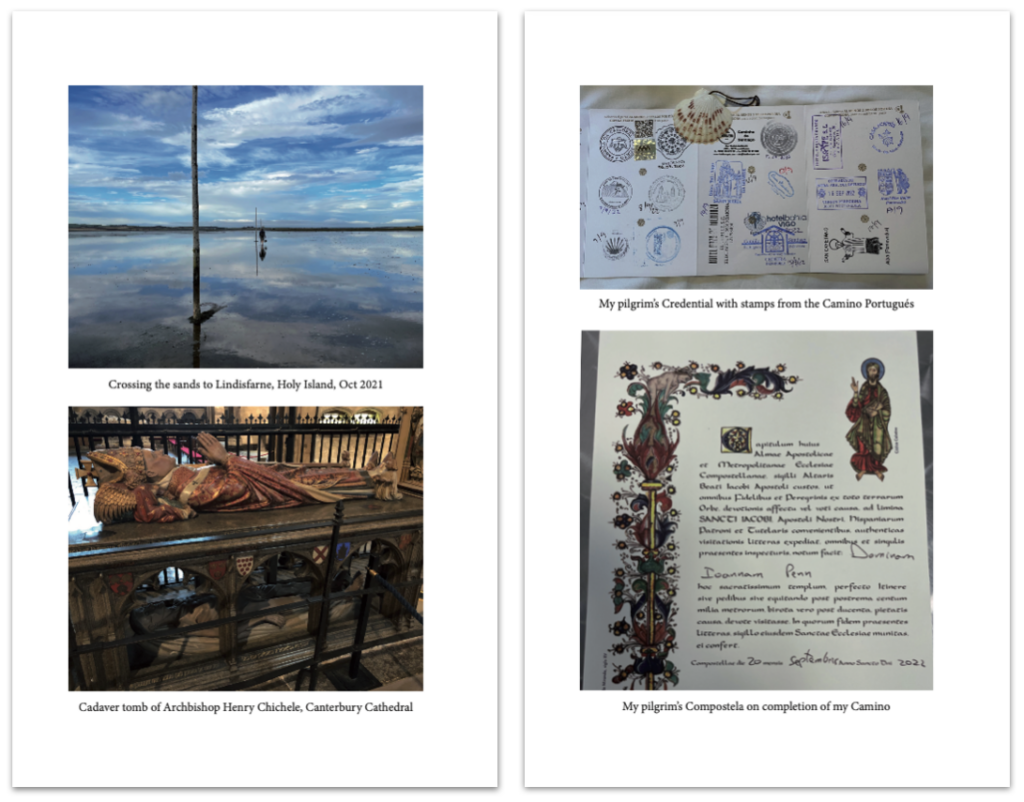
Once we finished, I had a proof copy rushed from Bookvault to make the final updates before getting the weight and shipping costs for the campaign. Between us, we turned around everything as fast as possible.
I love love love the hardback.
It has a silken finish cover and feels lovely and weighty. The picture came out well as the paper is of higher quality than usual to allow for color printing, and overall, I am incredibly proud of the finished product. I even sent a copy to my mother-in-law, which I have never done before! (And yes, she thinks it is good!)
I definitely should have allowed more time, as I spent most of the Christmas and New Year period working on the book, recording and editing the audiobook, and preparing for the campaign.
I also didn’t have time to prepare, record, edit, and produce the Writing Setting and Sense of Place course until after the campaign, and it was really hard to find the energy to do this afterward.
It took time to build the Kickstarter campaign page, create the video and incorporate feedback
Most authors don’t write sales pages anymore. Sure, we write a sales description for the book page on the retailers, but we don’t often do a whole page for multiple editions.
On Kickstarter, you are basically writing a sales page for your campaign, which they call a Story.
Some of your existing audience might click through and back the campaign without reading it, but most backers will check out the details to find answers to any questions they have.
It is a very long page — and you also need a video, which is best to record at the last stage when everything else is done.
You can still see my Kickstarter campaign page for Pilgrimage here, so I won’t go through everything in detail.
The key aspects were who the campaign was aimed at, why this campaign was important to me and the book, what products were available and pictures of everything so the page was visual, sample chapters and sample audio, specifications including weight, pages, listening time, table of contents, about me the author, stretch goals, add-ons, and any questions, risks and challenges.
Then the reward levels which all have to be set up carefully for each pledge level with shipping cost per country, and specific details about what is included in each level.
I felt like the page had too much information, but since I didn’t really get many Backer questions, I guess it did what it was supposed to do!
I rewrote and edited that page so many times, adding and changing the order of things, responding to feedback, and switching things around.
Then in the last week, I prepared and recorded the video.
I watched Russell Nohelty’s videos for several of his campaigns and modeled mine on his. He also gave me some tips to improve it. I’ve been making videos for years so I didn’t have to up-skill on the technical side, but it still took a whole day to make a video that was under 3 minutes!
It took time to prepare the marketing for the campaign
I’m pretty low-key for most launches these days. I publish the book, send a few emails to my list, announce it on the podcast, do a little social media, update my websites, and then move on to the next book.
This was probably my biggest effort in terms of launch since my first novel, back in 2011.
I only had a two-week campaign, so I needed to make the most of that window. I’ll detail the marketing I did in the next section, but it took a lot of time to prepare the various things, and then execute them, as well as keep the energy up for promotion during the campaign.
Two weeks was definitely the longest I would want to do, as I was really over it by the end!
It took more time to create and deliver the extra Stretch rewards I promised
Since I had pretty low expectations of funding, I set my first Stretch goal at £10,000 for ‘lessons learned from writing a travel memoir.’
When I promised it, I thought it might be a few pages of tips, but I am incapable of delivering something incomplete and it turned into a short book on the topic which I delivered in ebook and audio format (recorded by me).
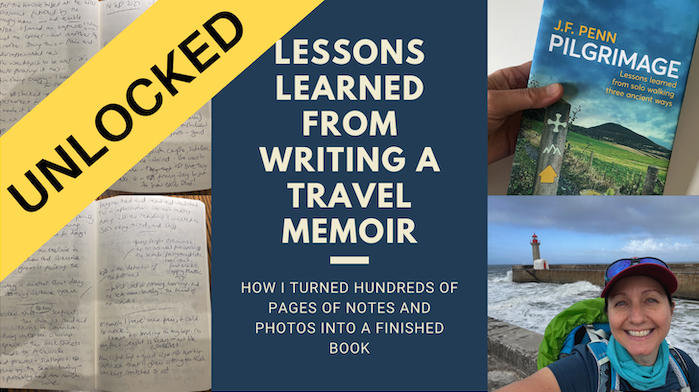
I will turn it into a book at some point, so the content will get re-used, but that definitely took more time than expected.
Then I set a stretch goal at £25,000 for a live zoom call for backers to ask me any questions, which we also achieved. That wasn’t such a big deal, and I really enjoyed doing it, so I would definitely do that again. It made me want to do more Q&A lives, but again, time is always an issue!
It took time to figure out the backer spreadsheet and check all the fulfillment details
Once you have finished your campaign, you send out surveys for mailing addresses and to fulfill rewards.
But I also needed to turn the backer report into a printing order for Bookvault, and that was nerve-wracking indeed! The spreadsheets were different formats and thankfully, my husband Jonathan helped me with the transformation from Kickstarter to Bookvault and then we spot-checked orders to make sure people would get the right books based on their orders.
I was petrified that some people might get the wrong book, and I’d have to resend the right one, which would end up with me out of pocket for double printing and shipping. But thankfully, all the checking worked and I haven’t heard from anyone who got the wrong book.
It took time to follow up with backer payment and address issues
Most backers were easy to deal with. They received the updates and Kickstarter emails; they filled in their surveys and didn’t have any issues.
But there were problems with about 5% of backers, most of which were not their fault. There were failed payments when banks thought Kickstarter might be fraud, there were missed emails because of issues with deliverability, so backers didn’t receive the rewards, or they didn’t fill in the survey and return their address.
I had to follow up with every one of these, some of them multiple times, and slowly reduced my list of outstanding backers. I still have one person who I can’t reach, even though I have tried contacting them via email, social media, and their website. [Karyn B, if you’re out there, please contact me!]
So here’s a tip. If you back a Kickstarter campaign, please log onto Kickstarter a few weeks after the campaign and check for updates. It’s possible that you are not receiving emails from Kickstarter and the creator may need details from you in order to fulfill your pledge.
If you backed my campaign, you should have everything now, so please contact me if you don’t have what you bought.
It took time to figure out the tax implications
This is not legal or financial advice and your tax will vary by jurisdiction, so please ask your accountant how you need to treat Kickstarter or any other book-related income.
Wherever you are, you will need to at least pay tax on the total income, but the complicating factor is whether you need to also consider sales tax.
Some authors told me that no sales tax was due, as you only get one payment from Kickstarter. Others said sales tax was due per product as per any other direct sale.
My accountant advised handling it as per any other book sales, e.g. in the UK, there is no sales tax on ebooks or print books, but there is 20% VAT on audiobooks and also stationary (for the workbooks). European countries have digital VAT on ebooks and audiobooks, due in the country of the customer. Check this resource out if you’re in the UK.
I followed my accountant’s advice, which essentially treats backers in the same way as my customers who buy on Shopify. Please don’t ask me any more about this. Ask a professional in your jurisdiction.
I haven’t had time to do much else as I felt like I couldn’t start anything new until everything in the campaign was finished
As soon as the campaign window closed, I felt like I had an open loop in my brain I desperately wanted to close in order to say the project was done.
I have now delivered all the book and course rewards and these lessons learned are really the last part of it (although I will still have consulting calls over the next year).
I’ve talked before about the different kinds of energy you need as an author — starting energy, pushing through energy, and finishing energy. Once the campaign was funded, my finishing energy kicked in and I was driven to get everything finished as soon as possible.
I sent the digital rewards out within a few days of the campaign closing, and also shipped the unsigned books, then ordered the print books, went and signed them, and then recorded the course.
It has been my primary focus for the last few months and I haven’t been able to do much else, except the podcast, which is my weekly commitment. Once again, I should have blocked out the time.
Bonus tip: Don’t plan an international speaking and book research trip during the campaign
Before the pandemic, I was due to speak at Superstars Writing Seminars in Colorado Springs, but that was postponed several times for obvious reasons. Then last year we were in New Zealand.
I wanted to fulfill my promise to Kevin J. Anderson and the team this year, so I planned the Colorado Springs trip and also added on a few days of book research in Washington, DC.
I figured the campaign would be running and I would be able to just let it run while I was away, especially as I had scheduled a lot of my marketing content already. I also assumed I could work during my jet lag early morning hours and in the time between sessions.

I had a great time, and it was a fantastic conference, but I didn’t anticipate how much the Colorado Springs climate would affect me. The dry air and lack of humidity plus jetlag made me exhausted, and I couldn’t see properly as my skin and eyeballs dried out (a common issue if you have had laser eye surgery as I have).
I also forgot (again!) that conferences are tiring for an introvert anyway, so I had little extra energy left over for the campaign. I tried to be superhuman and do too much at the same time, and didn’t account for the impact. A lesson the universe tries to teach me repeatedly… maybe one day I will get it!
With all of this said, I have learned SO MUCH doing this campaign. It’s as if I have done an intensive degree in a new form of publishing, so it’s bound to be tiring. All my lessons learned will also help with the next one.
How did I market the campaign?
I put more effort into marketing this book than I have into pretty much any other book in my author career.
I threw everything at it, because I wanted to do the best for this book of my heart — plus, my reputation as a book marketer was on the line! I did not want to fail and miss my funding goal.
Here are my marketing tips with examples from the campaign, many of which will be useful for ‘normal’ book marketing.
Talk and share about the book while you’re writing it, even though you might not know what it will turn into
I always share my book research and projects in progress, so this was nothing new, but Pilgrimage was years in the making so I have years of sharing aspects of it.
I’ve shared pictures from every pilgrimage walk on Instagram @jfpennauthor and Facebook @jfpennauthor and @thecreativepenn, and talked on my Creative Penn podcast about each solo walk, as well as doing solo episodes and blog posts about each on Books and Travel.
I also did a poll and shared my book cover design process, and then did an article on Why I Ignored Target Reader Feedback in the end.
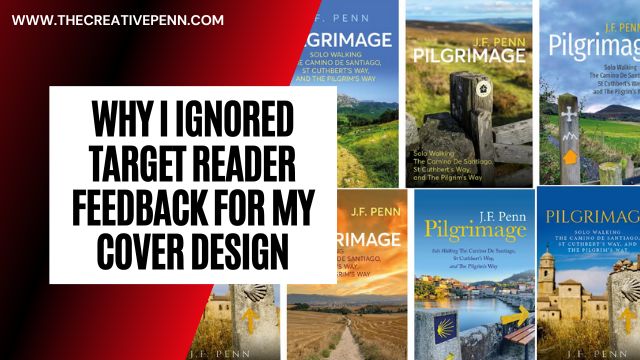
All this meant that many in my community became aware of my solo walking and my ecclesiastical interest and enjoyed my photos along the way, so when I announced the launch it was the culmination of years of buildup.
Set up the Kickstarter Pre-Launch page as early as possible and keep promoting it
You can launch a Pre-launch page once Kickstarter has approved your project and you don’t need to have completely finished your campaign to make it available.
Just complete the personal and business setup and fill in enough detail so they can verify your identity and judge the campaign to be real and within the guidelines and not just a scam/spam campaign.
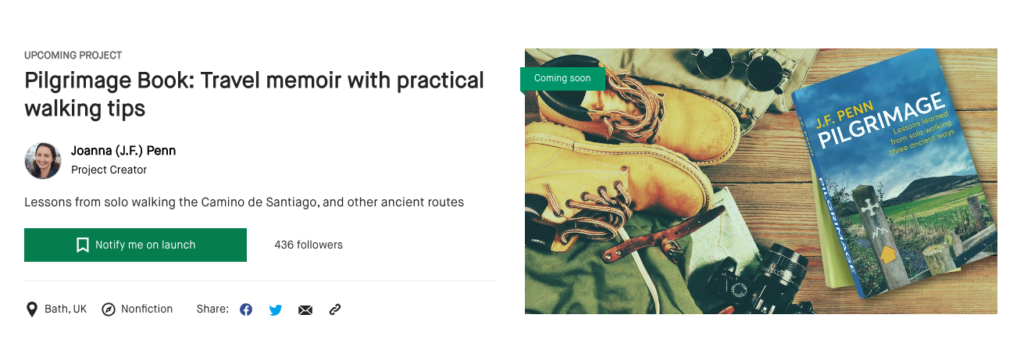
I started to promote my pre-launch page back in mid-December 2022, even though I only had a basic Story page and not all my Rewards were complete. I had 436 people signed up by the time it went live.
On launch, those people get an email from Kickstarter. They were responsible for my campaign funding within the first few minutes and then took it to 5x target within the first 24 hours.
The benefit of using Kickstarter for multiple projects is that previous Backers are notified of your new project. This compounds the effect over time, and why those who use Kickstarter successfully do multiple campaigns.
Kickstarter SEO and marketing potential on the platform
Kickstarter has its own ecosystem.
There is a discovery algorithm that can help you find projects you might like as a Backer, and there are also different ways to search. But only certain aspects appear in search, so your title and sub-title, as well as your header image, need to be optimized so that people can find you.
Your Story sales page needs to be clear with a compelling pitch. People have to want your Rewards, so marketing has to be baked into the products you’re offering and who you’re trying to attract.
The video doesn’t need to be a professional-level product, but it needs to connect with potential backers, so take the time to make a good one. And yes, this will take more time than you expect!
Kickstarter also has social media. Use #kickstarterreads and Twitter @KickstarterRead
If your project funds quickly and has a good trajectory, you might be picked for the Projects We Love badge, which also gives you better discoverability. You can also tag Kickstarter on social media and inform them of your campaign so they might notice you and add the badge anyway.
Kickstarter sent representatives to 20BooksVegas last year and hopefully will send people again so we can learn more about how to engage more successfully on the platform over time.
Content marketing
Content marketing is offering something useful/interesting/inspiring/funny for free in order to attract your target market, so they buy your book. This might be an article/blog post, video, or audio/podcast.
For fiction, it is usually a free book or short stories or other free examples of your writing that draw people in. (I have a course on Content Marketing for Fiction if you want to learn more.)
Content marketing is my favorite form of marketing as it is about attraction, not interruption.
It also involves creating something in the world that lasts over time, as opposed to an ephemeral spike ad or social media post that quickly disappears. Each has its place, of course, and I use them all.
My Creative Penn Podcast is content marketing, although it now also provides direct revenue in the form of advertising and Patreon support, and I consider it part of my creative body of work. My Books and Travel Podcast and blog are also content marketing.
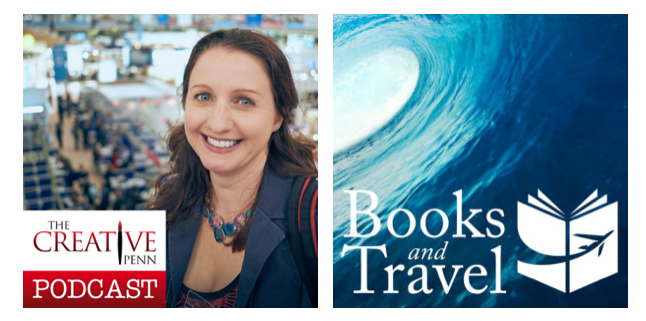
For this launch, I did content marketing on my own sites and shows, as well as other people’s, which I arranged and recorded in advance.
I mentioned the campaign in the introduction to every show for a month leading up to the launch and then during the launch, and I also did specific podcast episodes and blog posts.
All of these took time to prepare and produce, but each is a chance for another person to hear about the book, plus they are evergreen, so now I can point them at Pilgrimage on the other stores.
Use a redirection URL
For all my marketing, I used www.jfpenn.com/pilgrimage which I can redirect using Pretty Links plugin on WordPress to wherever I want it to go. Before the launch, it went to the pre-launch page, then the campaign itself, and now it goes to the book page, and once I build a landing page for the book, it will point there.
The URL needs to be easy to say out loud for use in podcast interviews and audio-first media.
Email your list (multiple times)
Some things change in book marketing, like the emergence of new platforms like TikTok, but one thing has stayed the same for decades now. If you have an email list, you can always sell books.
Your email list consists of people who have opted in to hear from you, so you can email them about normal launches as well as your Kickstarter campaign.
I have two email lists — one for The Creative Penn around writing, and the other around J.F. Penn for my fiction. I emailed both lists multiple times at different times in the campaign. I use ConvertKit for my email, but there are other options for authors.
Use specific referral links for different aspects of the campaign for tracking return
Kickstarter allows you to create different tracking links so you can link revenue to specific marketing events. For example, I used one link for my Creative Penn email list and another for my JFPenn email list, and yet another for Facebook advertising.
But I didn’t do this well enough and wasn’t consistent enough with the links I shared, so the tracking wasn’t consistent. I’ll be more specific with this next time as it was really useful to see where the income came from.
You can also add the Meta pixel and Google Analytics code to the campaign, which can also help with figuring out advertising.
Book images and social media
I initially mocked up the book using cover images on MockUpShots.com and then re-sized them in Canva in order to create social media images. You can also use BookBrush.
I later did a book photo shoot with the hardback in different places to give me more marketing assets to play with, all of which I will use over time as part of ongoing marketing. It makes me want to do the same with my other books, so I will be taking Map of Shadows around Bath, and Desecration with me to London next time.
I prepared and scheduled social media posts to go out every day in advance, primarily for Twitter @thecreativepenn, Instagram @jfpennauthor, and Facebook @jfpennauthor and Facebook @thecreativepenn.
It was a lot of work but I really enjoyed it and need to do more of this for my other books — especially as Facebook and Instagram link directly into my store so you can tag books and social commerce is a lot smoother through mobile devices.
I did some quotes from the book.
I blatantly used our cute British short-hair cats, Cashew and Noisette, for marketing reasons! #catstagram
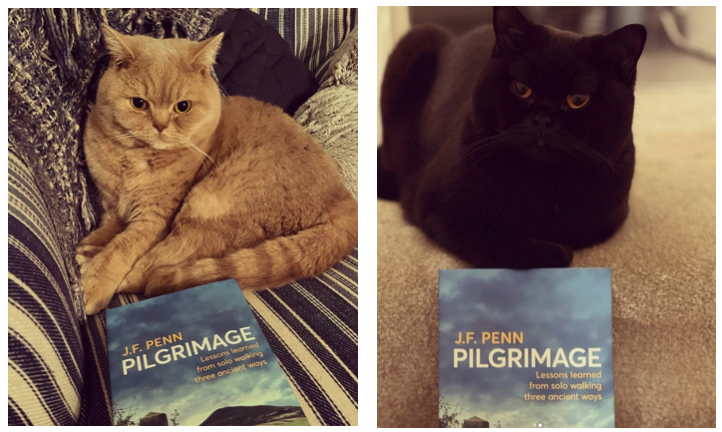
I use Buffer.com to schedule my social media, but there are other tools.
I also asked some friends who are travel influencers to share the book and sent them the hardback in advance so they could review if they liked.
Thanks to Sarah Baxter @sarahbtravel and Alastair Humphreys @al_humphreys for sharing the book.
And an especially big thank you to Anna McNuff, who gave birth to twins that week and still managed to share about Pilgrimage!
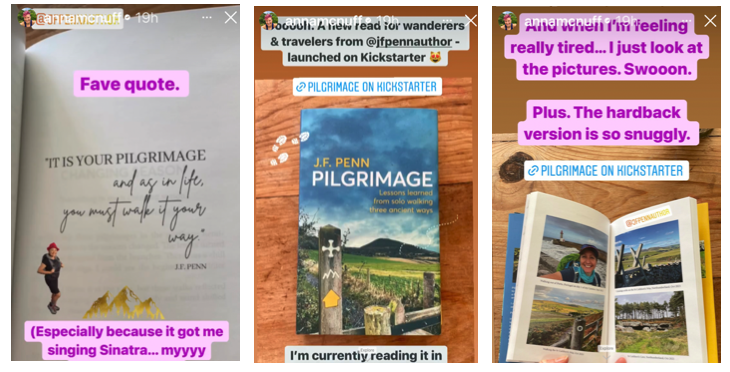
Backer Engagement during the campaign, and use of Stretch Goals
Let’s be clear. It was not natural for me to push a book every day for two weeks! I also felt awkward about engaging with Backers multiple times, let alone the wider community who I was sure were sick of my book. But I did it anyway as it was only a short campaign of two weeks.
I sent four Updates during the campaign to Backers, some of which are visible to the public, and then I sent Updates afterward with updates and delivery of the rewards.

I also really resisted Stretch Goals, as they are meant to relate to the project itself and I couldn’t think of anything.
In the end, I went with Notes on Writing a Travel Memoir at £10K (which I will turn into a book at some point), and a Backer Live Q&A with replay at £25K, both of which I scrabbled to decide on and then deliver as I really didn’t think I would need any stretch goals. I had very low expectations of what the campaign would achieve and then I blew past those pretty fast!
I will definitely plan Stretch Goals in advance and in more detail next time.
Facebook advertising
I did some Facebook ads for the campaign, primarily aimed at my List and people who follow my Pages, but also some wider reach using Lookalike lists + walking interests.
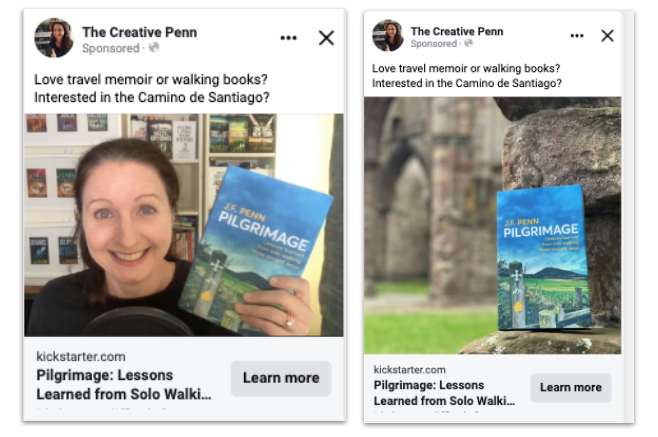
I used a tracking link and the revenue more than paid for the ads, so I would do more of this next time.
If you want to learn about ads, I recommend Mark Dawson’s Ads for Authors course. It’s focused on sending traffic to the retailers or your author website, but it is also relevant for advertising to Kickstarter.
Some marketing things I didn’t do
I didn’t try to get any press or media attention, mainly because I would have had to approach outlets much earlier in the process. I didn’t have the hardback finished until a few weeks before the campaign, rather than a few months before, which is when pitching for the press is a better idea.
I also didn’t collaborate with other creators on Kickstarter, even though I knew other authors doing campaigns at the same time. A couple of people asked me, but their campaigns were not at all related, and as with all book marketing, there is only a point to cross-promotion if you target the same readers.
I intended to do some Facebook, Instagram and YouTube live videos, but I struggle with live videos in general, and especially when I am tired, so I didn’t go ahead with those.
Want more marketing ideas?
For general marketing ideas, check out How to Market a Book.
For Kickstarter-specific marketing, check out Get Your Book Selling on Kickstarter by Russell P. Nohelty and Monica Leonelle, and the resources on KickstartYourNovel.com.
Post-campaign marketing: Backer email addresses. Do a survey for everyone
As part of a campaign I previously backed, I learned that I didn’t need to do a survey as a digital backer because they could just email the rewards, and sure enough, you can just email the Bookfunnel links, course discount code, etc, through the campaign.
But this was a mistake.
I should have done a survey for everyone.
If you do a survey, you can get the ‘real’ email, as some people use a cloaked email, and you can also include a checkbox asking people if they want to sign up for your email list.
While you get the email addresses of everyone who backs your campaign in your Backer report, you cannot just upload them to your email provider and start emailing them about other releases.
Kickstarter’s terms of use include the following:
“When you use Kickstarter — and especially if you create a successful project — you may receive information about other users, including things like their names, email addresses, and postal addresses. This information is provided for the purpose of participating in a Kickstarter project: don’t use it for other purposes, and don’t abuse it.”
This is all about data protection and privacy laws.
Basically, Kickstarter is the platform in this instance and people have signed up to receive emails from them, but not from you. All emails about the campaign go through Kickstarter and you don’t have permission to just upload that list to your email system and start sending them more emails. They have not specifically said they want that — unless they have in a survey with opt-in.
Of course, there are indirect ways to attract people to sign up for your list. My book, Pilgrimage, includes ways to hear from me further, so some backers will go on and sign up for my free thriller ebook, or my Author Blueprint.
You can also do Updates later, for example, when you have a new campaign, and in this way, Kickstarter acts as a different ecosystem for email.
Was it worth it? Will I do another Kickstarter campaign?
There were certainly a few moments where I was overwhelmed and thought it was too much work and wished I had just released Pilgrimage in the usual way!
But I am thrilled to have given this book of my heart a ‘proper’ launch, and there are certainly more copies in the hands (and ears) of readers than I expected for such a niche project. I also enjoyed a lot of the engagement with Backers, and I reinvigorated my use of Facebook and Instagram in a way I will continue to do moving forward.
Plus, when the campaign finished and that lump sum of money hit my bank account before I had even launched the book elsewhere, I could definitely see the benefits financially.
With a little distance, I am also really glad I had to stretch myself and learn new skills that will help in my author business, especially in this time of flux due to generative AI and changing business models. I am committed to direct-first and direct-only products, and Kickstarter will be a key part of my author business plan going forward.
Were my fears realized?
Just to recap, I was afraid of failure and embarrassment if I failed to fund, of getting something wrong and being out of pocket, of letting backers down, and of over-committing myself and resenting the workload.
Really, the only thing that happened was over-commitment and a lot more work than I expected, but the time I put in was also likely the reason for the campaign’s success.
I had to learn a new platform and a new approach to publishing and book marketing, so I kind of did a mini-degree at the same time. So, of course, it took time!
I also should have accounted for how much an international speaking trip saps my energy and not done the campaign at the same time. I am not superwoman, as much as I like to think so a lot of the time.
Yes, I will do another Kickstarter, but only for special projects that are suited to this kind of intensive campaign
I’m planning my next one in Jan/Feb 2024, for my ‘shadow’ book, which I already have around 40K words on.
It’s about creating from your shadow side, based on the Jungian idea of the shadow. I’ll be doing a survey on that in the coming months to get your thoughts on writing from the dark side.
Given all my lessons learned, I will start writing the book and preparing the campaign six months in advance, rather than six weeks. I’m going to put it out there now — I am aiming for a six-figure campaign, and that takes time to plan and prepare for.
Should you consider a Kickstarter campaign for your book?
Only if you consider this to be a career you want to invest in and a platform you want to do more than one campaign on.
If you just have one book or a couple of books, and you don’t want to do marketing or connect with readers, then definitely don’t do a Kickstarter. It is not a magic button that will make you money, and it takes time and effort to have a successful campaign.
But if you want to build a long-term author business, then selling direct should have a part to play, and Kickstarter is a great way to make more money per book/product, and connect with readers.
It’s really only the beginning of the trend of authors selling direct, so don’t worry, you can learn how to do this over time.
If you need help with your campaign
Go to KickstartYourNovel.com regardless of the genre you write in, and check out Monica Leonelle and Russell Nohelty’s resources — from free info to the book to courses and an Accelerator program. There’s something for everyone no matter your budget.
WMG Publishing with Dean Wesley Smith and Kristine Kathryn Rusch also have free and premium courses on Kickstarter.
I also think that given the increasing number of publishing Kickstarter campaigns, it is likely that an ecosystem of support will emerge soon enough specifically for the platform.
There will be book-specific project managers you’ll be able to hire to run things for you, Kickstarter marketing experts, and also publishing support for creating beautiful books.

For example, White Fox offer services and information on crowdfunding. Here’s a podcast interview with John Bond and Chris Wold talking about options.
What happens next for Pilgrimage?
As I write this, Pilgrimage has not officially launched yet.
It’s for sale on my Shopify store, CreativePennBooks.com so you can buy it now over there, but I’m not planning to do more marketing on it until after 1 May 2023 when it is fully available everywhere in all formats.
It’s on pre-order at all the usual stores and you can order at your local bookstore or library. It’s filtering slowly into the audiobook ecosystem as well.
This is another brilliant thing about Kickstarter.
You have made ‘spike’ money already, and then you get to publish in the usual way and make money all over again in the slow-burn model.
Given the niche of Pilgrimage and solo walking, especially for the Camino de Santiago, I expect to sell a low level of copies every month, as it is one of those consistent small niches that people become interested in over time.
Also, some of the Kickstarter backers will be happy to leave reviews — and if you loved Pilgrimage, I’d really appreciate a review on my store (just select the format you bought, scroll down and click Write a Review), on Goodreads, or on any of the retailers once it’s out.
You can also update your Kickstarter campaign page to point to the book in other places, which is another good addition to ongoing marketing.
Okay, that was an epic lessons learned and a satisfying end to the last four months of work on my first Kickstarter campaign.
If you’d like to be notified of my campaign for ‘the shadow book,’ which will launch in early 2024, then sign up for my Author Blueprint, or my free thriller, and you’ll be on my email list. I’ll also talk about it on my Creative Penn Podcast nearer the time.
Please let me know your thoughts, questions, or lessons learned from your own Kickstarter campaign in the comments, or tweet me @thecreativepenn
The post originally appeared on following source : Source link

